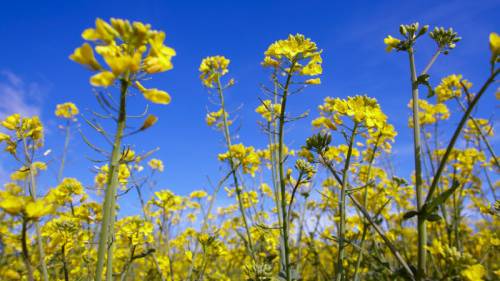Seed Treatments: Precise Technology Means We Can Protect Food Crops Before They Even Grow
From the remarkably wet conditions in the Midwest U.S. to the insatiable fall armyworm spreading from Africa to Asia, farmers worldwide are facing new threats to their harvests, placing unprecedented stresses on every planting season.
But precision agriculture has proven to be an increasingly valuable approach for farmers, and seed treatments are one of the finest examples of this. Seed treatments allow farmers to go one better than nipping crop threats in the bud – they can now nip them in the seed.
Such treatments offer farmers a cost-effective alternative to traditional crop protection products that are used on seedlings and plants, as only the seed is treated. This helps minimize spending and labor on inputs while protecting crops from pathogens and pests from the outset. In addition, seed treatments protect the seed from attacks by pests and disease for which there is not an alternative “rescue.”
It works quite simply. A coating is applied to seeds, which can be formed from a number of different products, ranging from fungicides to insecticides, which manage diseases and pests, and inoculants, or microbes that promote plant health. These can be specifically customized to suit the individual farmer or crop need, taking into account weather conditions and other threats.
Treatments also offer the additional benefit of supporting common conservation practices such as cover crops and minimal tillage, which put nutrients back into the soil and reduces soil erosion. With an increasing number of farmers experiencing degraded soils due to climate change, this is likely to become even more important.
These treatments, with the many benefits they provide, help farmers by reducing the amount of money they will need to spend on their farm otherwise. Only the seeds need to be treated, so farmers do not need to spend as much time spraying their fields or monitoring for pests.
That is why farmers across both the developed and developing world are using them. They offer them a tool to boost productivity whilst contending with the new challenges brought on by new pests and disease, as well as the climate crisis.
In the U.S., for instance, volatile weather conditions this year made the window of opportunity to plant much narrower, whilst making the planted seed more vulnerable, all of which makes the farmer’s job that much harder. In the Corn Belt region of the U.S., for example, extraordinarily wet weather plagued farms from Ohio to Nebraska from April, causing severe planting delays, pushing the harvest even later and forcing farmers to contend with frost. This places additional pressures on farmers, and seed treatments can provide a level of insurance that the seed will grow despite the harsher, more restricted conditions.
Meanwhile, in parts of Africa and Asia-Pacific, fall armyworm has decimated thousands of hectares of crops. And the pest does not favor any specific plant, feeding on at least 80 different crops including staples like rice, sorghum, millet and maize, which form a crucial part of the daily diets of rural households.
Treating seeds offers farmers a method of protection, especially from pests that attack early in the season.
Seed treatments are a valuable tool in the farmer’s toolbox and just one example of continuous innovation within the crop protection industry. And alongside these developments, the agriculture sector must also ensure new technologies reach farmers and provide options for full-season solutions.
This means addressing political and regulatory issues to avoid limiting progress and innovation, and maximize adoption, particularly in regions where specific crop pests pose a direct threat to food security.
Once a seed is planted, its growth and development is not only dependent on genetics. It is also at the mercy of the environmental factors including pests and disease. Just as we would want every opportunity to protect our children against disease, farmers must be given the chance to protect their crops from the moment they are planted.






